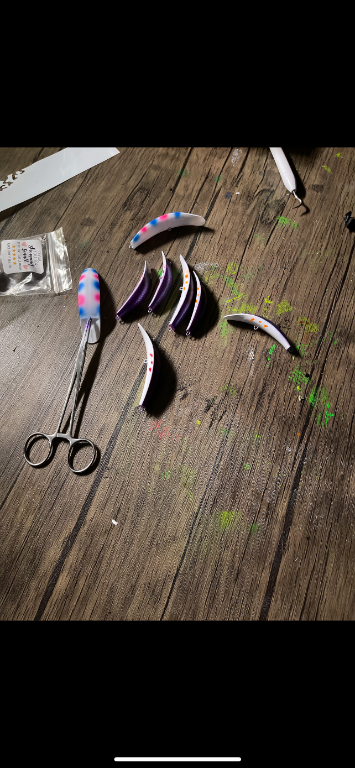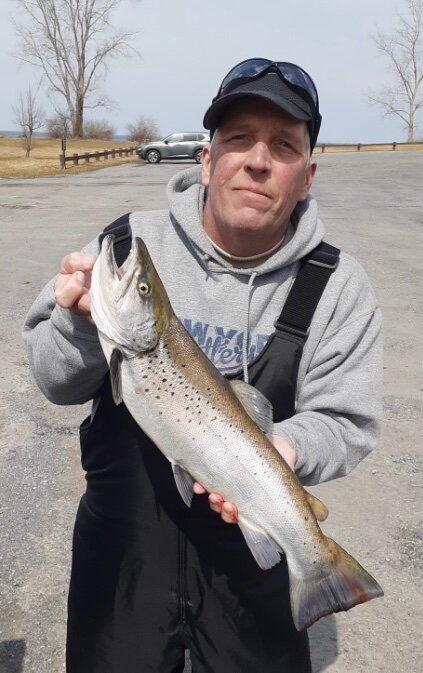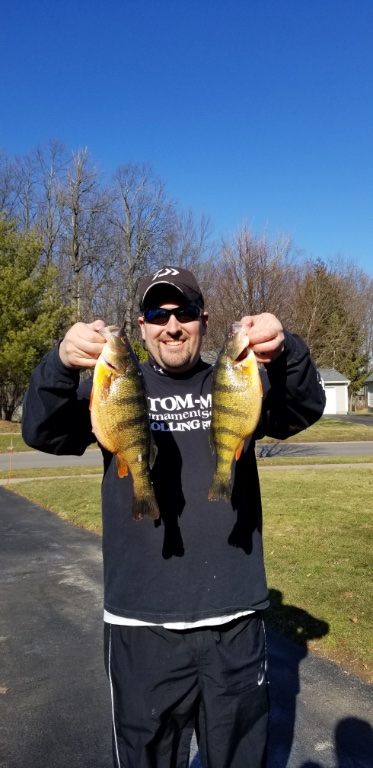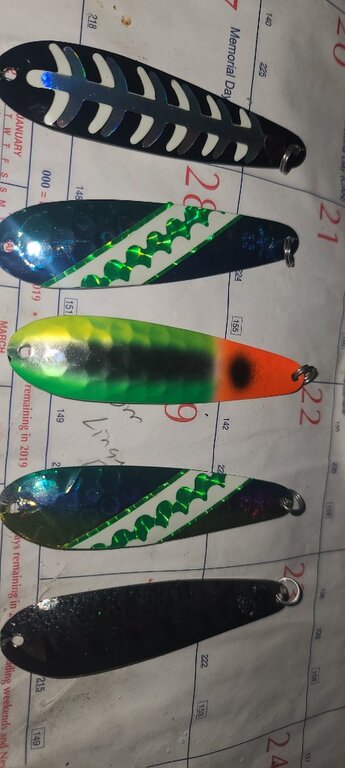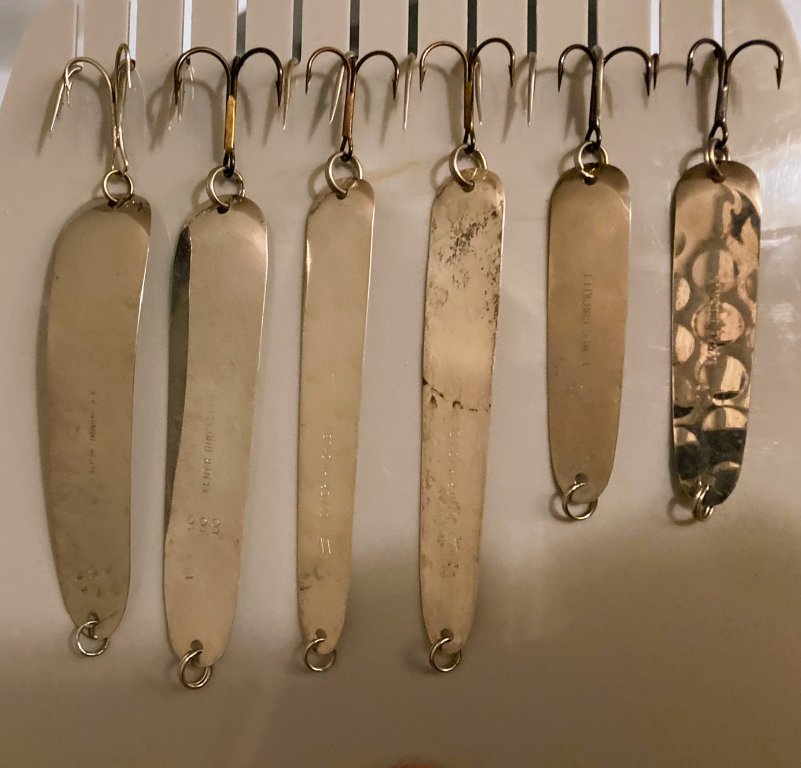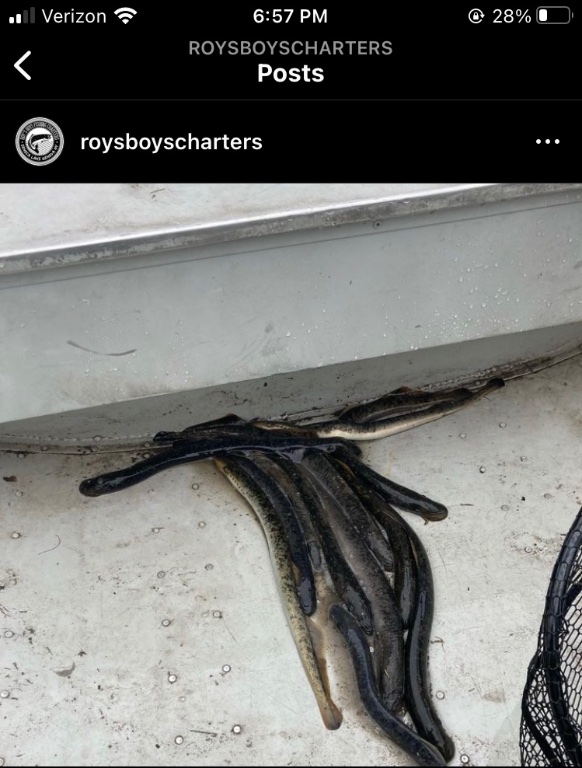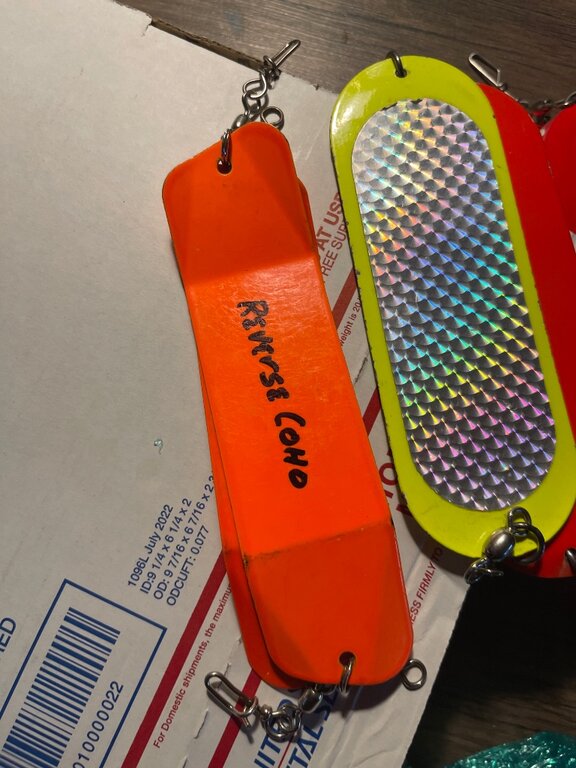-
Posts
13,806 -
Joined
-
Last visited
Content Type
Profiles
Forums
Events
Gallery
Store
Everything posted by Sk8man
-
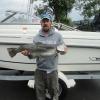
Looking for a Victrola fishing box!
Sk8man replied to Joel Radecki's topic in Finger Lakes Discussion
Reel Doc Although it could be done on Youtube or with a Go Pro etc. the absolute best way to get the true gist of it is to watch in person someone experienced doing it because as I said the "nuances" or small things are critical to success. I did fail to mention that most folks use something to protect their fingers from the wire (often a thumb and forefinger cut from a pair of thick leather work gloves) because if you snag up on bottom or even have a large laker at the end you could potentially severely cut or even lose a finger from the wire cutting. It is a technique done totally by hand without any reel etc. The slack in the wire is taken up automatically by the spring (or gear) inside the box. So as you change depths the victrola or A& S reel roll the wire onto the spool for you. In the old days various things were used to manually wind up the wire onto while trolling, OR the wire was coiled on the floor of the boat trying hard not to kink the wire. Mike: It would be a lot of fun watching Bill do it wouldn't it (especially experiencing initial hit and then the "head shake" of a real big one -

Looking for a Victrola fishing box!
Sk8man replied to Joel Radecki's topic in Finger Lakes Discussion
A few diehards like Frogger and Signalman on Seneca and there are still some on Cayuga, Keuka and Canandaigua. It is the one technique though that takes years to perfect with a lot of hands on experience and not because it is particularly "difficult" but rather the little nuances make all the difference in the world. Two people on the same boat doing it can appear to be doing about the same thing but with vastly different results, and the bottom characteristics felt through the wire are very important - so knowing the bottom very well where you are fishing is also a game changer. You troll at very slow speeds and usually on a diagonal from shore gradually letting out wire while feeling the bottom to know where the lure is. My grandfather did it on Seneca in the early 1900's from a rowboat -

Looking for a Victrola fishing box!
Sk8man replied to Joel Radecki's topic in Finger Lakes Discussion
-

Looking for a Victrola fishing box!
Sk8man replied to Joel Radecki's topic in Finger Lakes Discussion
Bill It is mainly used for bottom fishing for Lake Trout. There are spring (s) (some have only one others have multiple usually two) inside that are wound up with a "key" to create tension on single strand copper wire to which either a somewhat heavy spoon with the fixed hook facing upward to avoid catching on bottom or snagging weeds, OR a small thing resembling a flatfish on a leader (Twin minnow). The spoon is dragged slowly along bottom all the while "feeling" the bottom. The Twin minnow is run close to bottom. The operator holds the wire between his thumb and forefinger and uses a jerking motion ( often 2 small jerks followed by a long one or the reverse of it) as the spoon drags along the bottom (hopefully on cobble so you can feel it better). Like wise the twin minnow is pulled usually slightly and just off bottom, but everyone has a little different technique and success may depend on minor things that are done and firsthand experience is probably more critical to this technique than anything else in fishing and closely relates to success. Sorry Bill I couldn't resist ( But I did make it in less than a thousand words) Oh I forgot..... any slack in the wire as you troll along is taken up automatically by the spool on the top of the victrola. -

Looking for a Victrola fishing box!
Sk8man replied to Joel Radecki's topic in Finger Lakes Discussion
-

Looking for a Victrola fishing box!
Sk8man replied to Joel Radecki's topic in Finger Lakes Discussion
-
-
Sorry drynet if the use of the word "point" gave you the wrong idea... I was just referencing that to give some context to what I was saying about the reason for my strategy....I own what I said... I wasn't trying to stir anything up at your expense
-
More is not always better. A point has been made about the release of fish relating to the amount of time it takes to retrieve long lengths of copper. Ifishy's advice fits with my approach. I have 200 copper and 300 copper setups and when I want to get deeper I use attachable weights and I have run them with a Fishhawk TD attached quite a few times so that I have a pretty good idea where the lines are running with given amounts of weight. Even without weights it is really a "guesstimate" with them ( e.g 44 and 66 ft respectively without weights) but I have also found that even that particular assumption can be off with strong opposing or cross currents etc. The main reason for doing it that way is to conserve time reeling fish in and in the heat of summer they still may languish. All this stuff really boils down to "personal preferences". There is no "right" or "wrong" to a given strategy. Another thing is that "stealth" may be somewhat irrelevant when for example talking about a 300 copper with fluoro leader that is trailing the length of a football field behind the boat.
-
I fully agree the larger ones in that range are primarily females and they are the breeders. Usually when you fillet them much of their internal area is devoted to fish egg capacity so it may not have as much usable flesh as smaller perch anyway. I don't keep anything 13 inches and above unless it is dying. Perch are a vulnerable species because of their schooling behavior despite their prolific breeding. We need to conserve breeders and real small perch as well. I have seen people keep some that would look good in a fish bowl or aquarium and you'd probably need a microscope to see them on the dinner table.
-

Troll into wind or with it?
Sk8man replied to troutman10's topic in Questions About Trout & Salmon Trolling?
Hb2 made a very good point about the driver...you don't want to be wandering all over the place going into the wind or heavy current and you do have to adjust your setups accordingly. Usually lures operate more effectively going against or across current and going with strong or cross currents you can experience more tangles especially on turns so it pays to keep things simple. -

Troll into wind or with it?
Sk8man replied to troutman10's topic in Questions About Trout & Salmon Trolling?
I prefer t go with the wind whenever possible. I don't use an autopilot and primarily use my 9.8 for trolling, but it can also depend on which way the currents are running and the strength of it. If I have to go against a strong wind I use my 135 Optimax motor for better control. It helps to know your boat well and how it handles in various weather conditions to make decisions. -
-

Revitalization of a wonderful "oldtime" lure
Sk8man replied to Sk8man's topic in Open Lake Discussion
-

Revitalization of a wonderful "oldtime" lure
Sk8man replied to Sk8man's topic in Open Lake Discussion
-

Revitalization of a wonderful "oldtime" lure
Sk8man replied to Sk8man's topic in Open Lake Discussion
Yes Stan mine are going to get a real good workout as soon as I can get the boat out of storage and especially during the derby. He nickel plates the before the gold or silver plating so these are really sturdy spoons with a great finish. The black nickel ones save me from painting spoons black too https://elmerhinckley.com -
May he rest in peace and his family find peace as well. Very difficult being on the "sidelines" while someone you love is going through and fighting this horrible disease....been there unfortunately. RIP Dave.
-
-
-
-
-
Once again, this has many answers and hopefully some of the guys will pipe in with their specific setups. When running fairly close to bottom I usually run about 3-4 ft from the weight with flashers, dodgers and fly or cowbells, and slow my speed to about 1.4 to 1.8 sometimes even less with current. A standard for spoon is about 12- 20 feet if run clean if without attractor and with attractor 6-8 ft. or so. Things are different if running a Spin Doctor as they go all over the place rotating so I don't use them near bottom. You'll want to check the specific setup out to see how it is operating at the speed you are going before sending it down. As far as the distance to the peanut or Spin n Glow from the cowbells it is worth experimenting with for your own purposes but as a rule I set mine about 18 inches to about 28 inches being the longest. The Hammerhead cowbells offer the least amount of resistance so you might want them instead of the older type metal ones for easier handling. Both the size # 4 and # 5 work well on Seneca but I most often use the #5's with bait rigs. Remember to set your release clip to tighter tension with cowbells or flashers etc. to avoid false releases.
-
-
Mark and I used to message back and forth in between his trucking trips and I hadn't heard from him in awhile or hadn't seen posts here for some time. Would have reached out if I had known.....a real loss to the LOU community So sorry to hear that and my condolences go to his family. He was an incredibly gifted and competent fisherman and openly shared his knowledge with the folks on LOU. May he rest in peace. Thanks for letting us know Andy.


